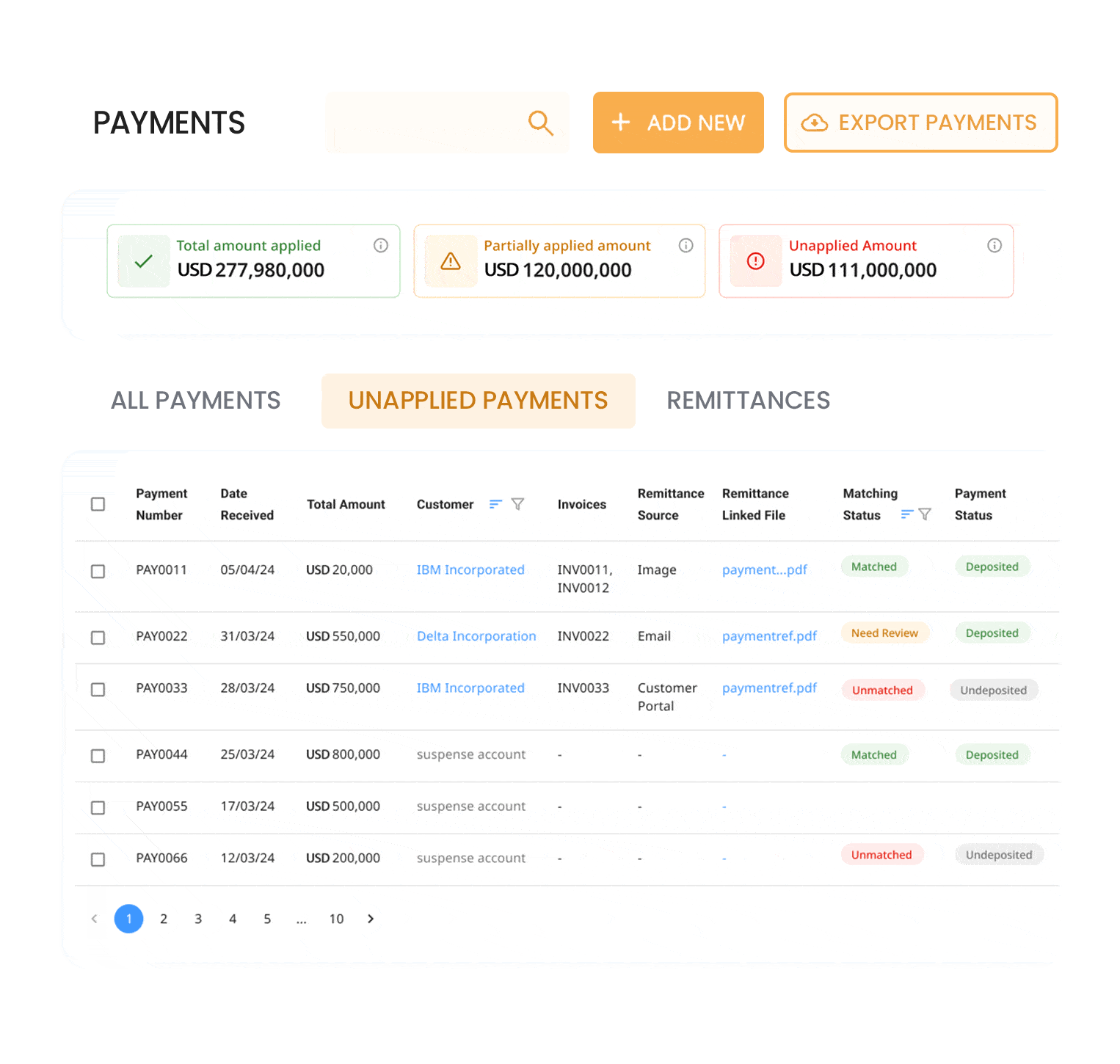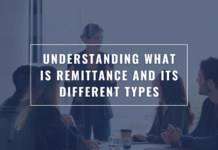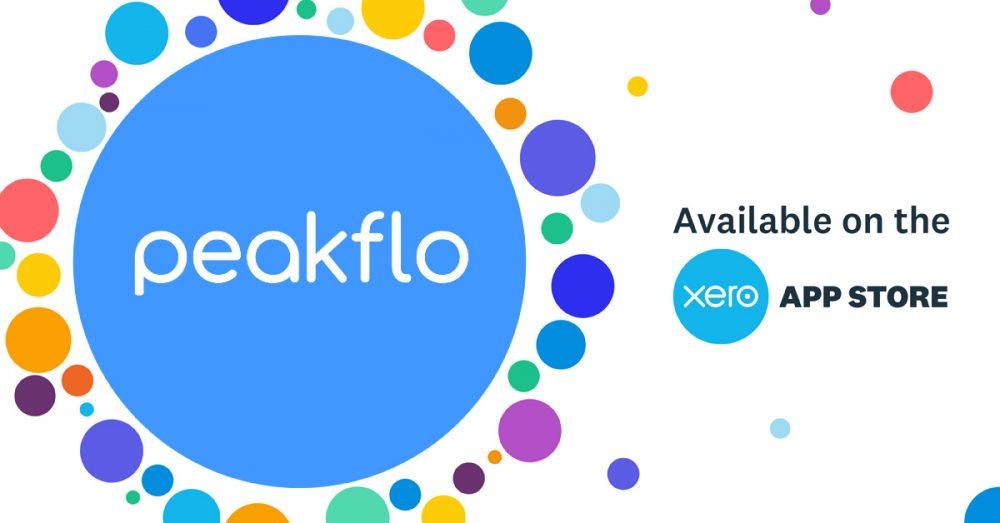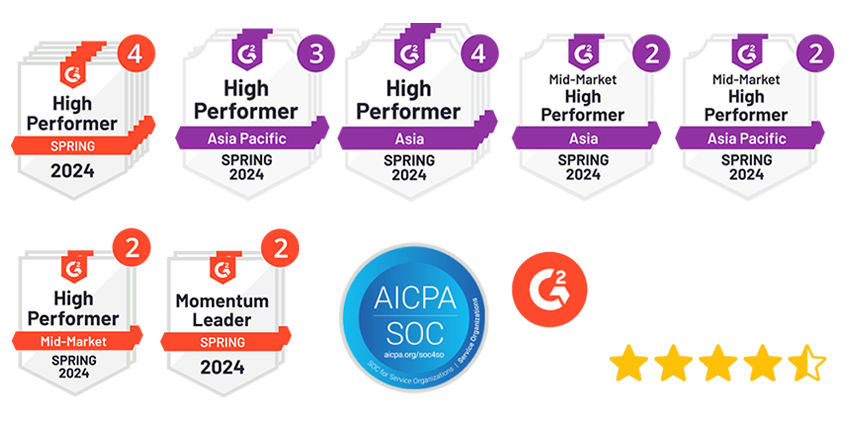Handling international payments can be a challenge for finance teams in Singapore. You may need to pay overseas vendors, send money across borders, or follow strict financial rules. These tasks often feel complicated and take up valuable time. Mistakes can lead to delays, higher costs, and added stress.
This blog will explain what is remittance in simple terms. You will learn why it is essential for businesses and how it helps manage payments effectively. We will also cover the main types of remittances. This will help you choose the right methods to save time, reduce errors, and cut unnecessary costs.
By reading this guide, you will understand how remittance works and how to use it effectively. Whether you are making payments to vendors or handling customer refunds, this blog is designed to simplify the process. The tips here will help finance teams in Singapore work smarter and stay ahead in a connected world.
What Is Remittance?
Remittance means sending money from one person to another, often across countries. For businesses, it is a key part of staying organized and keeping things running smoothly. It involves paying vendors against outstanding payments, clearing invoices, and handling payroll for employees in different places. Remittance also makes sure payments for goods and services are made on time. This helps businesses keep their cash flow steady and maintain good relationships with their vendors.
Understanding what remittance is is important for businesses that manage international payments. Whether you use banks or digital platforms, the way you send money affects both costs and speed. Picking the right B2B payment methods can make processes faster and less expensive.
What Are the Different Types of Remittances?
There are two main types of remittance, based on who receives the money.
- Inward Remittance
Inward remittance happens when money is sent to your country from abroad. This could be for reasons like getting your salary from a job overseas or receiving payments for services your business provided. It means money is flowing into your country, helping with things like operating costs, investments, or paying off financial responsibilities. These transactions are important for keeping your business finances steady and growing.
- Outward Remittance
Outward remittance is when you send money from your country to someone in another country. This could include payments to vendors, salaries for international employees, or funding projects outside your home country. For example, if a company in Singapore sends money to a supplier overseas, it’s an outward remittance.
Knowing these two types of remittances helps you track and manage the movement of money. It makes it easier to organize your financial transactions and ensures smooth international payments.
Understanding the Different Payment Methods for Remittance
Managing money transfers for your business does not have to be complicated. Let us discuss further below:
- Direct Money Transfers
The most straightforward option is transferring funds directly from your business bank account to the recipient’s bank account. You can either do this online or by visiting your bank in person. While this method is convenient, keep an eye on fees, especially when using credit cards for payments.
- Money Orders
If speed is not your priority and you are looking to save on transaction fees, money orders are a reliable option. Simply deposit the money order at the bank, provide the recipient’s details, and you are good to go.
- Cheques
Cheques remain a traditional method for transferring money. While they are secure, the process can be slow due to account verification and processing time.
- Prepaid Debit Cards
Prepaid debit cards are a flexible option for electronic transfers. You can load money onto the card, add the beneficiary’s details, and send the funds. Be cautious, though—some prepaid cards have high international transfer fees, and not all countries accept payments through these cards.
- Banks, Credit Unions, and Payment Platforms
Singapore’s banking network is extensive, offering multiple options for remittances. Use your regular bank or explore alternatives if their fees are high. Credit unions and other payment service providers often offer more competitive rates.
- Cryptocurrency Transfers
Some people use cryptocurrency for remittance due to its speed and lower fees. While this is not mainstream, it is becoming a popular choice for tech-savvy users.
Understanding the Key Players and Steps in the Remittance Process
When customers pay from overseas, several steps and participants are involved. Each plays an important role in making the transaction smooth and cost-effective. Whether you are handling invoices for international customers or reconciling payments, knowing the remittance process is essential. It can improve cash flow and make your AR management more efficient.
Let us look at the main parties involved in remittance and the steps to handle international receivables efficiently:
Key Parties in the Remittance Process
Knowing who is involved helps you manage remittances better. It ensures payments are accurate and reach the recipient on time. Here is a simple breakdown:
- The Sender: This is your business. You start the payment by transferring money from your account to another party.
- Sending Agent: This is the first middleman. It is usually a bank or a financial service. They collect details like the recipient’s information, the payment method, and related fees.
- Receiving Agent: This is the recipient’s bank or financial institution. They process the payment, check the sender’s details, and notify the recipient.
- The Recipient: This is the final party. They are your vendor or customer. They receive the money in their account after taxes and exchange fees are deducted.
Steps in the Remittance Process
Here is an overview of the key steps:
- Choose a Reliable Service: Pick a trusted remittance provider. Look for one with fair fees, good rates, and dependable service.
- Gather Information: Have all necessary details ready. This includes your identification and the recipient’s account information.
- Specify Amount and Currency: Decide how much to send and in which currency. Make sure it matches the recipient’s requirements.
- Understand Fees and Rates: Review the charges involved. These include exchange rates, service fees, and any other costs.
- Select a Transfer Method: Choose a method that works best for you. Options include online transfers, mobile apps, or bank services.
- Consider Speed: If the payment is urgent, pick a service that can deliver faster.
- Confirm and Pay: Double-check every detail before confirming the payment. Then proceed with the transfer.
- Notify the Recipient: Inform the recipient about the payment so they can confirm receipt.
- Track Your Transfer: Use tracking tools to monitor the progress of the transaction until it is completed.
Remittance Costs: What You Need to Know
Remittance fees depend on the service provider and the method used to send money internationally. The costs involved in transferring funds across borders can vary widely based on the remittance service or financial institution you choose. These fees typically include handling charges, currency conversion costs, and other related expenses.
If you are transferring money from your SGD account to an overseas vendor, it is essential to understand the different fees you might encounter. Here is a simple breakdown:
Handling Charge:
- This is a fee charged by the bank or remittance provider to cover administrative costs.
- It ensures your transaction is processed smoothly and securely.
Cable Charge:
- When transferring funds to an overseas bank, a cable charge is often applied.
- This fee compensates for the bank’s effort in coordinating with the receiving bank.
- Think of it as a fixed cost for the “communication” involved in completing your transaction.
Agent Bank Charge
- The agent bank, which handles the transaction on the receiving end, charges a fee.
- They work with your provider to ensure the transfer is completed accurately and on time.
What Are the Key Benefits of Remittances?
Remittance plays a vital role in boosting economies and supporting businesses. Here is how it can make a difference:
- Better Access to Quality Products: With remittance, businesses can source top-notch materials and products from around the world. This not only improves the quality of goods but also helps companies to stay competitive in their industry.
- Simplifies Global Growth: Expanding into international markets becomes less stressful with remittance. It supports smooth payments for payroll and suppliers, making global operations easier to handle.
- Cuts Costs with Vendors: Remittance helps businesses pay vendors quickly and securely. This efficiency lowers production costs, which means companies can offer fair prices while maintaining quality.
- Provides Emergency Support: In times of crisis, like natural disasters, remittance enables fast financial help. It can be used for donations or to provide urgent relief supplies.
- Boosts Spending Power: Receiving remittance increases disposable income. People can spend more on goods and services, which drives demand and strengthens business supply chains.
- Encourages Economic Growth: Increased spending puts more money into circulation, growing the economy. This supports businesses with higher sales, stronger incomes, and better expansion opportunities.
Challenges in Remittance Services
Remittance services are not without challenges. High fees, delays, and security concerns can frustrate users and service providers. So, let us explain these challenges in simple terms and learn what can be done to improve the experience.
1. Regulatory Compliance
Every country has strict rules about sending and receiving money. Remittance providers must follow anti-money laundering (AML) and know-your-customer (KYC) regulations. These rules are important to prevent illegal activities.
However, following these rules takes time and money. This can slow down transactions and make services more expensive. Customers often feel the impact of these delays and higher costs. Providers need to find smarter ways to meet these requirements without making the process difficult for users.
2. Fraud and Security Risks
When money moves internationally, there is always a risk of fraud or hacking. Criminals may try to steal funds or access sensitive information. These risks make security a top priority for everyone involved.
Many providers use advanced security tools to protect transactions. However, even the most secure systems can not prevent every attack. That is why customers should choose providers with strong reputations and positive reviews to avoid unnecessary risks.
3. Technological Integration
New technologies have made remittance services faster and more efficient. However, adopting these technologies is not always easy. Providers often face challenges when connecting new systems to older ones. Issues like downtime and data privacy concerns can slow progress.
Some regions adopt technology faster than others. This uneven pace leads to differences in service quality. Providers need to work toward creating smooth, reliable systems that work for everyone.
4. Processing Delays
Waiting for money to arrive can be stressful, especially during emergencies. Delays happen because of time zone differences, intermediary banks, or slow systems. These factors can leave recipients without the funds they urgently need.
To fix this, providers must focus on faster processing times. Quick and dependable services can make a big difference for users who rely on timely payments.
5. Exchange Rate Volatility
Currency exchange rates can change in an instant. Even small fluctuations between sending and receiving money can reduce the amount the recipient gets.
This makes cross-border transactions unpredictable. For people who depend on every dollar or cent, this can be a serious problem. Providers offer tools or options that reduce the risks caused by exchange rate changes.
6. High Transaction Costs
Sending money internationally often involves high fees. Providers charge for their services, and currency conversion costs add to the total. These fees can reduce the amount of money recipients receive.
For remittance services to remain accessible, pricing needs to be fair. Providers must balance keeping fees low while ensuring reliable services.
7. Limited Access
Not everyone can easily use remittance services. In remote areas, there may be no banks, internet, or infrastructure to support money transfers. Regulatory barriers can also make it harder to send or receive money.
Improving access is crucial. Everyone, no matter where they live, should have the ability to send and receive money conveniently. Expanding infrastructure and addressing regulatory issues can help solve this problem.
What Is the Difference Between Remittance and Payment?
More than knowing what remittance is, you need to know how it is different from payment, especially in business. Remittance refers to sending money across borders. This can be done using banks, digital platforms, or other methods. However, remittance is not limited to digital transfers between countries. While it is often linked to online international transfers, its meaning covers much more.
But is remittance just like moving money between accounts? Let us explore this in simple terms.
| Aspect | Remittance | Payment |
| Definition | Sending money internationally, often as a wire transfer, through various banks or platforms. | Exchanging money or assets for goods and services. |
| Channels | Banks, money transfer operators, payment institutions, or mobile platforms. | Cash, debit/credit cards, cheques, or electronic transfers. |
| Speed | Generally faster with expedited transfer options. | Varies depending on the chosen method. |
| Transaction Fees | Lower fees compared to traditional bank transfers; fixed rates by region. | Fees depend on the method, amount, and exchange rates. |
Suppose your tech company in Singapore buys parts from a vendor in Japan. To settle the bill, you send money from your business account to theirs. This is not just a regular payment—it is a business-to-business (B2B) foreign remittance. Its international nature sets it apart from simple domestic payments.
Why does this matter? Because remittance comes with unique factors. You must consider exchange rates, transfer fees, and compliance with international rules. These elements can impact how quickly the payment reaches the vendor and how much it costs.
When finance teams understand the difference between remittance and payment, they can make better decisions. This knowledge helps avoid unnecessary delays and extra costs. For companies in a global market like Singapore, this clarity is essential for smooth financial operations. It also ensures transactions are completed quickly and accurately.
Role of Technology in Remittance
A new report by Allied Market Research shows that the Singapore remittance market is growing quickly. In 2022, the market was valued at $8.05 billion. By 2032, it is expected to reach $13.34 billion. This increase reflects a steady Compound Annual Growth Rate (CAGR) of 5.2% between 2023 and 2032. Fintech platforms, digital wallets, and blockchain are creating smarter and more efficient ways to manage payments. Let us take a look at how:
- Fintech Solutions and Digital Wallets
Fintech platforms have made remittance services more advanced. Digital wallets allow people to transfer money quickly and often at a lower cost than banks. These wallets remove extra steps in the process, which helps reduce fees and save time.
They also combine useful features in one place. With a digital wallet, users can exchange currencies, track payments, and complete transfers instantly. For finance teams in Singapore, this makes managing international payments much simpler. These tools help reduce delays and improve how payments are handled, especially in busy financial environments.
- Blockchain in Remittance
Blockchain is improving remittance by making it more secure and transparent. It uses a system that records transactions in real-time. This reduces errors, prevents fraud, and ensures every transaction is accurate.
Blockchain also removes the need for middlemen like banks. This speeds up transfers and lowers fees, especially for currency conversions. The technology makes international payments faster and more affordable for businesses.
For finance teams in Singapore, blockchain offers a better way to handle global payments. It reduces costs and increases efficiency, helping teams stay prepared for the future. By adopting these tools, businesses can stay ahead in a fast-changing financial world.
Automate Your Remittance Processing With Peakflo: From Bank Statement to Payment Matching
Managing payments can be stressful, especially for finance teams in Singapore. They handle many bank accounts and receive payment details in different ways. Peakflo’s Cash Application makes this simple by doing the work automatically and reducing mistakes. This helps businesses spend less time on paperwork and more time growing.
Here is how Peakflo works and the benefits it provides:
- Real-Time Bank Integration
Manually downloading and managing bank statements takes a lot of time. Peakflo connects directly to all major banks and updates transactions in real-time.
What are the benefits:
- Your financial records stay up-to-date without extra effort.
- Your team saves hours that would otherwise be spent downloading and organizing bank statements.
- AI-Powered Remittance Extraction
Peakflo uses advanced technology to read payment details from emails, PDFs, and spreadsheets. It matches payments to invoices automatically.
What are the benefits:
- Manual data entry is no longer needed, reducing the chance of errors.
- Payment matching is faster, so cash flow updates are quick and accurate.
- Automatic 3-Way Matching
Checking payments manually takes time and is prone to mistakes. Peakflo solves this by automatically matching payment details, invoices, and bank statements. If something does not add up, it alerts your team.
What are the benefits:
- Reconciliation becomes faster and easier.
- Errors are caught early, which means smoother operations and better financial decisions.

Conclusion
Today’s businesses need a better way to handle international payments. Finance teams spend too much time downloading bank statements, matching payments, and fixing errors. This is where Peakflo steps in to change the game.
Think of Peakflo as your “all-in-one” finance solution. It connects to your banks instantly, reads payment information automatically, and matches everything perfectly. No more typing numbers by hand or checking endless spreadsheets. When something does not match up, Peakflo spots it right away.
Your finance team deserves better than getting stuck with paperwork. They should focus on helping your business grow, not wrestling with payment details. Hundreds of companies have switched to Peakflo and transformed how they handle payments.
Ready to see the magic in action? Take a quick demo tour with us. We will show you exactly how Peakflo can unlock smarter payment processing.










![Why AI Sales Calls Are Making Good Sales Reps Even Better [2025 Guide] ai sales calls](https://blog.peakflo.co/wp-content/uploads/2025/09/65168cf6-3001-4733-8cbc-12d5684cf449-218x150.webp)


































